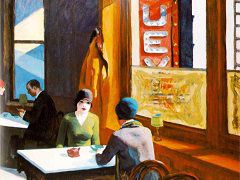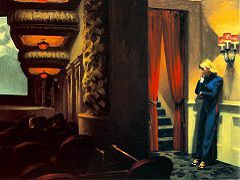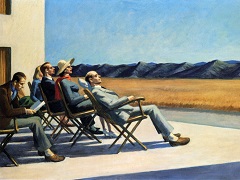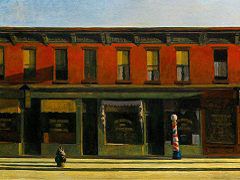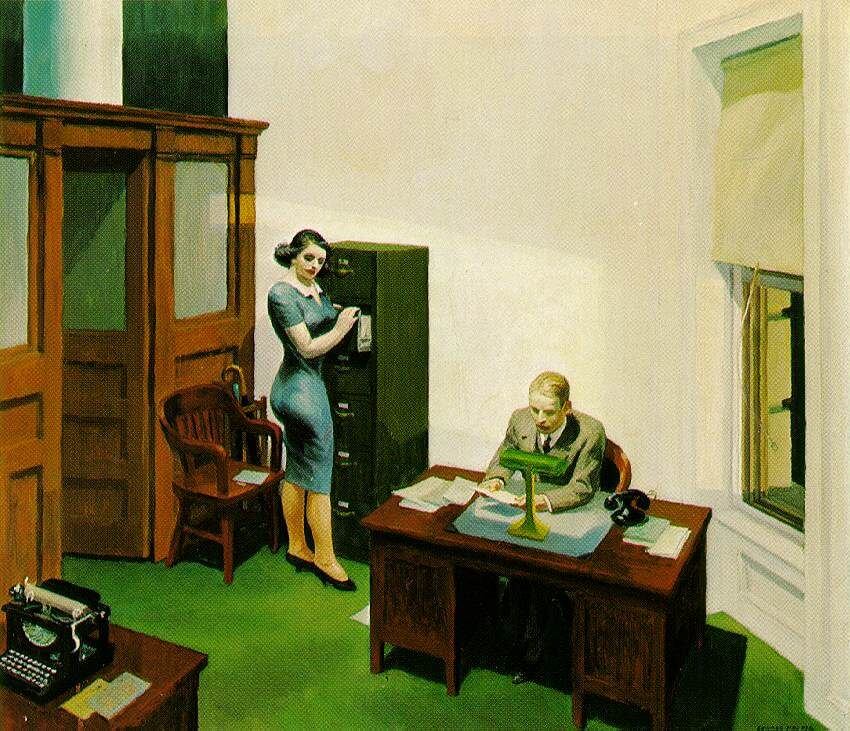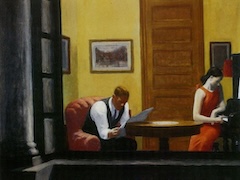Compartment C Car, 1938 by Edward Hopper
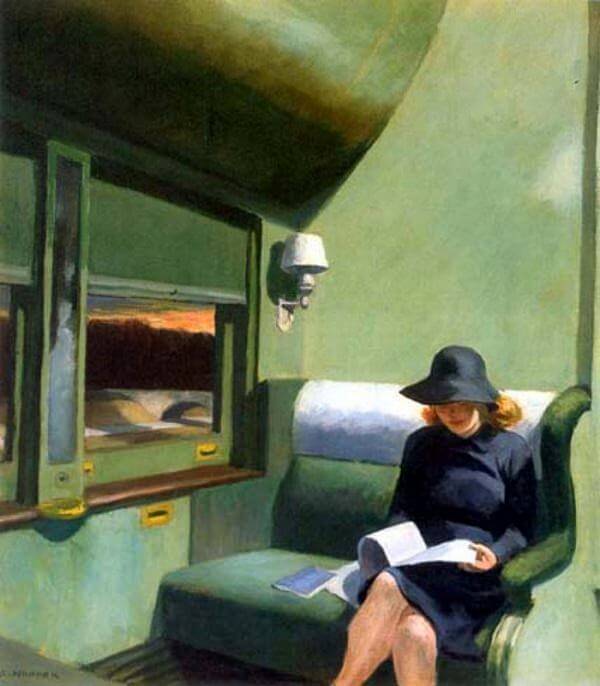
Hopper also took an interest in cars and trains. It is a pity he didn't live long into the jet age, though we sense his shadow in many contemporary works. The artist was drawn to the introspective
mood that travelling seems to put us into. He captured the atmosphere in half-empty carriages making their way across a landscape: the silence that reigns inside while the wheels beat in rhythm
against the rails outside, the dreaminess fostered by the noise and the view from the windows - a dreaminess in which we seem to stand outside our normal selves and have access to thoughts and
memories that may not emerge in more settled circumstances. The woman in Hopper's Compartment C Car 1938 seems in such a frame of mind, reading her book and shifting her gaze between the
carriage and the view.
Hopper's people give the impression of being people attempting to escape something. They are involved in themselves and cannot seem to get their lives straight. They escape the society of others,
and would like to escape themselves. They are not really at home anywhere, neither in a room nor outside, neither at work nor at play, neither alone nor with others. That is why they are on the move.
Their home is a train station, a highway restaurant, a gas station, a hotel or motel, a train compartment, a snack bar, a theater foyer, a movie house.
They are going somewhere without being able to arrive. They have personality traits that seem mutually exclusive. They are mobile and restless, yet statically tied to some location from which
they will probably never escape.



